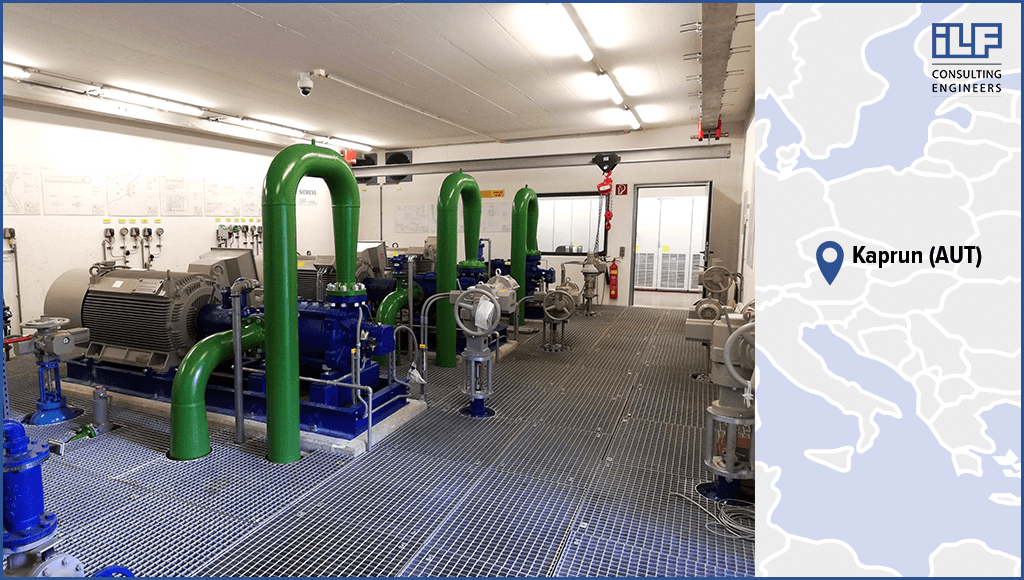Reservoirs for Energy Storage
moreProviding efficient solutions for using existing snow-making infrastructure to additionally produce and store energy is also part of ILF’s portfolio – and exactly this is what has been done during one of our projects in the Kitzsteinhorn ski area (AUT).
The Gletscherbahnen Kaprun AG, with ILF’s help, has been relying on sustainable energy for years. In addition to the photovoltaic systems on operations buildings in the Kitzsteinhorn ski area, the Grubbach small-scale power plant also produces its own power from meltwater. The first construction stage of this combined pumped storage and hydroelectric power plant, with two turbines, was put into operation in 2012 – and a third turbine has recently been added to provide electricity in summer and snow in winter.
The special feature of this autonomous power production is that when the lever is moved in autumn, water is pumped through the pipes from the large high-altitude reservoirs “Mooserboden” and “Wasserfallboden” directly into the snow-making systems in the Kitzsteinhorn ski area. This means that no additional storage reservoirs need to be created for snowmaking in the high alpine part of the Kitzsteinhorn ski area.
In spring, on the other hand, the meltwater from a large catchment area is collected in the Langwied catch basin and continuously fed, via a 2-km-long pipeline and over 460 m in altitude, to the power plant. Here, three turbines convert 300 L of water per second into electricity, which generates 1.2 million kWh of green electricity in a regular year. This amount corresponds to the annual electricity consumption of approx. 350 households.
How does a pumped storage plant work?
A PSP temporarily stores surplus energy in the form of potential energy (elevation potential energy) in a reservoir. The water is pumped into the storage reservoir by electrically driven pumps so that it can later be used to drive the turbines and generate electricity. Surplus electrical energy from the power grid is taken during periods of low demand and fed back into the grid at peak load. Essentially, there is a lower and upper basin between which water is moved up and down – the lower basin can either be an artificial storage reservoir, a natural lake or a watercourse. In the simplest case, electricity is either generated by operating the pumps in reverse (turbine mode) or by using separate turbines, for which a wide variety of designs and sizes come into question depending on the operating conditions.


